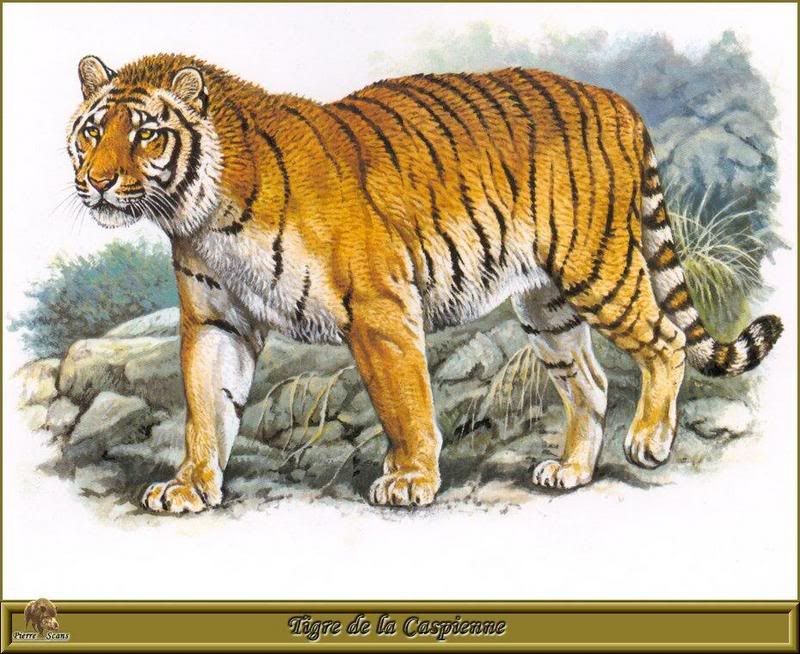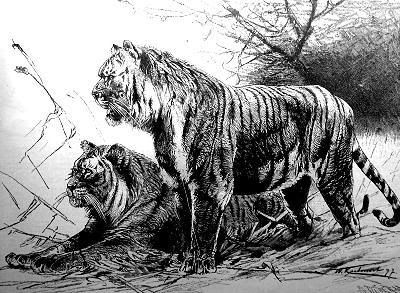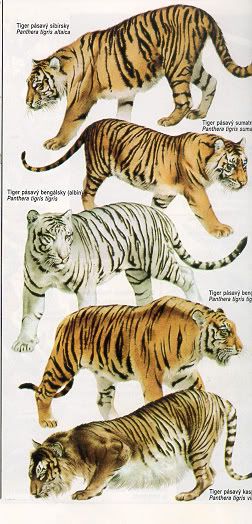|
|
Post by another specialist on May 12, 2007 5:40:19 GMT
CURRENT STATUS OF CASPIAN TIGER (PANTHERA TIGRIS VIRGATA) IN TURKEY Earlier in the 20th century, the presence of the Caspian tiger had been known by Turkish (Turkish Republic Official Gazette, 1937). Yet, when the Caspian tiger was declared Extinct in the world, international zoologists did not accept the idea that the Caspian tiger distribution range extended as far as eastern Turkey (Dr. George Schaller, Ankara, Turkey, personal communication, 2003). In fact, the species was officially a pest species until 11.07.2004 in Turkey. In the 1970.s, surveys conducted by Paul Joslin in Iran turned up no signs of the Caspian tiger and the conclusion was made that the Caspian tiger had been extirpated. International cat experts only became aware of the presence of the Caspian tiger in Turkey after a tiger was killed in Uludere, Þõrnak 1970 (Uludere was a sub-province of Hakkari in 1970). Three years later, a botanist visiting the area saw and photographed the tiger pelt (see the color photographs in the appendix) and published the story (Baytop, 1974). Nevertheless, there had been no historical efforts by the national authorities or international conservation community to reveal the distribution of the Caspian tiger in eastern Turkey. Eastern Turkey holds the remotest and wildest land of Turkey. The members of Turkish Armed Forces, who has extensively worked in different regions of Turkey, describes the region as the most wild of Turkey (Kundakçõ, 2004). Due to the harsh climate of the region, some sub-provinces and villages are isolated from other parts of Turkey during several months of the year. Within the framework of Southeastern Anatolia Biodiversity Research Project of WWF-Turkey, a survey was conducted to reveal the large mammal presence and distribution in the region (Can & Lise, 2004).Within the framework of the first attempt to collect systematically the large mammal data in Southeastern Turkey. First, a questionnaire was designed and distributed to 450 military posts in the region. The questionnaire included questions about the presence of large mammal species and each questionnaire were accompanied with .Turkey.s Mammal Poster. of Turkish Society for the Conservation of Nature (which became WWF-Turkey later). The questionnaires were filled out by military personnel in cooperation with the local people and 428 questionnaires were returned to WWF-Turkey. The questionnaires also included questions related with the historical tiger presence in the region. Later, the questionnaire results were used to identify the areas that the field survey will focus. In the questionnaire results, some military personal had presented rumors about the presence of large cats in the region. Moreover, during the interviews with local people, the mammal team collected rumors about big cat sightings and met local people that claimed to hear roaring from different sites. In addition, it was reported that there was a local tiger pelt trade in the region and three to five tigers were killed in each year and the pelts were sold to rich land lords in Iraq until mid-1980s. This also confirms Turan (1984) who has obtained his information from local hunters in the region. Baytop (1974) similarly reported that 1-8 tigers were killed each year in Þõrnak region. The Directorate does not have field offices in the region. Therefore, the information on the wildlife of the region has been limited than from the other parts of Turkey. Hunting has never been controlled or documented in the region. Due to the topographical features of the area, the area is very difficult to police even for the military. The communication with the local community has been very limited historically and even today, the flow of information from the region is limited. Mainly due to those factors, the tiger pelt trade had never appeared in the national press although some of the tiger pelts were send to Ýstanbul until 1969 (Baytop, 1974). The tiger that was killed in Uludere, Þõrnak in 1970 appeared in national press since it was a visiting botanist from western Turkey who had photographed and published it. Although, sporadic reports were received of local and military personnel seeing big cats in the region since the mid 1990s, prior to the WWF-Turkey.s large mammal study, no survey was conducted by a trained biologist to investigate those sightings in the region. With special authorization from Turkish Armed Forces, I as the team leader, Yõldõray Lise (Project Coordinator) and Murat Tuna (WWF-Turkey volunteer) visited Uludere, Þõrnak and met the local military officers. The military officers in Uludere, Þõrnak reported to us that there had been a recent sighting of a big cat in the vicinity. We met the local military officer who had previously reported to his colleagues that by using military type night vision equipment, he had seen a big cat next to a waterhole located at an altitude of 3000 meters. We were interested to travel to that big cat sighting location but due to security and safety reasons, we were informed that this would require certain security and safety arrangements in the field. Since we were authorized to stay only a day in the Uludere, we had to return to Þõrnak on the same day. Nevertheless, new data about the historical presence of tiger was gathered within the survey region. Some of these records were presented in the questionnaires filled by the military personal and the others were reported by the local people to us during the field work. All tiger records from Turkey, including the new historical data collected by Can & Lise (2004) during the Southeastern Anatolia Biodiversity Research Project is presented in Table 1 in the next page . Considering that, one to eight tigers were killed each year in Eastern Turkey until the mid1980s, the tiger that was killed in Uludere was a young individual according to the stripe patterns, the Caspian tiger is likely to have existed in the region at least until the early 1990s. Nevertheless, due to mainly lack of interest in addition to security and safety reasons trained biologists had not attempted to survey in Eastern Turkey before. Realizing that there had been no historical attempts to understand the distribution of Caspian tiger in Turkey and considering the new data on the historical presence of Caspian tiger and recent tiger rumors from the region, a survey proposal for a joint Caspian Tiger Survey in Eastern Turkey had been submitted to US Fish and Wildlife Service Rhinoceros and Tiger Conservation Fund by WWF-Turkey, American Friends of Turkey (AFOT) and American Turkish Council (ATC). Turkish Armed Forces has expressed their interest in the proposed study and now AFOT; ATC and WWF-Turkey have been seeking necessary funds to conduct the survey while waiting the authorization from the Turkish Armed Forces. Source: [ftp]http://www.tigerforum.de/misc2.php4?action=download&attachmentid=620[/ftp] the whole text can be find here: www.lcie.org/Large%20Carnivores%20in%20Turkey.pdf |
|
|
|
Post by another specialist on May 12, 2007 5:41:24 GMT
This is so interesting, thanks for posting  I wonder where the project stands now..  Indeed very interesting! I think I have to update the page on this subspecies.  |
|
|
|
Post by another specialist on May 12, 2007 5:42:10 GMT
|
|
|
|
Post by another specialist on May 12, 2007 5:48:43 GMT
from above   Javan tiger  Caspian tiger 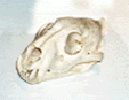 Bali tiger |
|
|
|
Post by another specialist on May 12, 2007 5:49:21 GMT
|
|
|
|
Post by another specialist on May 12, 2007 5:52:56 GMT
Sightings and Doubts About Extinction [edit] Caspian Tiger rediscovered in Turkey? The following excerpts are taken from "Can, O.E. 2004.Status, Conservation and Management of Large Carnivores in Turkey. Council of Europe. 29 pages. Strasbourg, France". "Earlier in the 20th century, the presence of the Caspian tiger had been known by Turkish (Turkish Republic Official Gazette, 1937). Yet, when the Caspian tiger was declared Extinct in the world, international zoologists did not accept the idea that the Caspian tiger distribution range extended as far as eastern Turkey (Dr. George Schaller, Ankara, Turkey, personal communication, 2003). In fact, the species was officially a pest species until 11th July 2004 in Turkey. In the 1970s, surveys conducted by Paul Joslin in Iran turned up no signs of the Caspian tiger and the conclusion was made that the Caspian tiger had been extirpated. International cat experts only became aware of the presence of the Caspian tiger in Turkey after a tiger was killed in Uludere, Þõrnak 1970 (Uludere was a sub-province of Hakkari in 1970). Three years later, a botanist visiting the area saw and photographed the tiger pelt and published the story (Baytop, 1974)." Turkish scientists, during a study on the field, reached some information on the presence of the Caspian Tiger. "Within the framework of Southeastern Anatolia Biodiversity Research Project of WWF-Turkey, a survey was conducted to reveal the large mammal presence and distribution in the region (Can & Lise, 2004). Within the framework of the first attempt to collect systematically the large mammal data in Southeastern Turkey. First, a questionnaire was designed and distributed to 450 military posts in the region. The questionnaire included questions about the presence of large mammal species and each questionnaire were accompanied with Turkey's Mammal Poster of Turkish Society for the Conservation of Nature (which became WWF-Turkey later). The questionnaires were filled out by military personnel in cooperation with the local people and 428 questionnaires were returned to WWF-Turkey. The questionnaires also included questions related with the historical tiger presence in the region. Later, the questionnaire results were used to identify the areas that the field survey will focus. In the questionnaire results, some military personal had presented rumours about the presence of large cats in the region. Moreover, during the interviews with local people, the mammal team collected rumours about big cat sightings and met local people that claimed to hear roaring from different sites. In addition, it was reported that there was a local tiger pelt trade in the region and three to five tigers were killed in each year and the pelts were sold to rich land lords in Iraq until mid-1980s. This also confirms Turan (1984) who has obtained his information from local hunters in the region. Baytop (1974) similarly reported that 1-8 tigers were killed each year in Þõrnak region. Considering that, one to eight tigers were killed each year in Eastern Turkey until the mid 1980s, the tiger that was killed in Uludere was a young individual according to the stripe patterns, the Caspian tiger is likely to have existed in the region at least until the early 1990s. Nevertheless, due to mainly lack of interest in addition to security and safety reasons trained biologists had not attempted to survey in Eastern Turkey before." It does not prove that the Caspian Tiger survived, but the researchers think they should investigate it seriously. They will give the start for such an investigation probably in 2005.
Reported Sightings
There are still occasional claims of the Caspian tiger being sighted, with some occurring in Afghanistan, (pug marks have occasionally been reported here), and others coming from the more remote forested areas of Turkmenistan. Alas, experts have been unable to find any solid evidence to substantiate these claims and the last reliable sighting was probably at least 30 years ago. It has also been suggested that the 'tiger' sightings may actually be Persian leopards. Any hope of Caspian tigers in Afghanistan could be further dashed as war continues to rage across areas of the country.Without photographic evidence, expert assessment of pug marks (tiger paw prints), attacks on animals or people, or a sighting by an expert authority, there is presently no good reason to believe that the Caspian still lives.en.wikipedia.org/wiki/Caspian_tiger |
|
|
|
Post by another specialist on May 12, 2007 5:53:21 GMT
A captive Caspian Tiger, Berlin Zoo 1899.The Caspian Tiger (or Persian tiger) (Panthera tigris virgata) was found in Iran, Iraq, Afghanistan, Turkey, Mongolia, and the Central Asiatic area of Russia. This sub species of tigers, the smallest in size became extinct in the late 1960s. Their extinction was caused by politicians working to eradicate the species. They sought to eliminate the tigers because the Russian government was planning a huge land reclamation program. Soon the tigers were referred to as the "traveling leaporads" or as the "road", due to having to follow the migratory herd of their prey animals. Although thought to be extinct the tiger has supposedly been sighted a few times. Characteristics The Caspian tiger was the second largest tiger. The body of this subspecies was quite stocky and elongated with strong legs, big wide paws and unusually large claws. The ears were short and small and gave the appearance of being without hair on the tips. Around the cheeks the Caspian tiger was generously furred and the rest of the pelage was long and thick. The colouration resembles that of the Bengal tiger. The skin specimen in the British Museum has a yellow-gold colour over the back and flanks, while the sides of the body are lighter that the back and the striping also varies from light to dark brown. The chest and abdomen is white with yellow stripes, while the facial area is yellow with brown stripes on the forehead and obvious white patches around the eyes and cheeks. Outer portions of the legs are yellow and the inner areas white. The tail of this subspecies is yellow and has yellowish white stripes. In winter, the hair is very long, and the tiger has a well-developed belly mane and a short nape mane. Habits Caspian tigers are solitary for the most of their life. They spend time with other tigers during mating season. The males are bigger than the females. The tigers live on average in the wild for ten to fifteen years. Tigers can breed at any time of year, but they usually mate in winter or spring. The mating period of the tigers lasts twenty to thirty days. If a female does not find a mate at the right time, she may come on heat again later. The tigers give birth to about two to three cubs. The cubs are born blind and open their eyes about ten days oafter birth. The cubs drink their mothers milk for about the first eight weeks of their life. The father takes no responsibility in raising the young it is done all by the mother. The curious, playful cubs leave the den with their mother after about two weeks. The mother now must hunt for three instead for one. But she does not have much time to hunt since she must watch her cubs. The cubs begin to hunt after about eleven weeks but until then they are mostly dependent on their mother. A tigress bears cubs only once every three-four years. History and Extinction The Russian government have worked heavily to eradicate the Caspian tiger during planning a huge land reclamation programme in the beginning of the 20th century. They considered there was no room for the tiger in their plans and so instructed the Russian army to exterminate all tigers found around the area of the Caspian Sea, a project that was carried out very efficiently sadly enough. Once the extermination of the Caspian tiger was almost complete the farmers followed, clearing forests and planting crops like rice and cotton. Due to intensive hunting and deforestation, the Caspian tiger retreated first from the lush lowlands to the forested ranges, then to the marshes around some of the larger rivers, and finally, deeper into the mountains, until it almost certainly became extinct. The last stronghold of the Caspian tiger in the former Soviet Union was in the Tigrovaya Balka area. Though the tigers were reported as being found here until the mid-1950s, the reliability of these claims is unknown. An exact date of extinction is unknown. Some reports state that the last Caspian tiger was shot in Golestan National Park (Iran) or in Northern Iran in 1959. There are even claims of a documented killing of this subspecies at Uludere, Hakkari in Turkey during the 1970. Yes other reports state that the final Caspian tiger was captured and killed in Northeast Afghanistan in 1997. The most frequently quoted date is late 1950s, but has almost no evidence to back it up. It appears this date came to be accepted after being quoted by H. Ziaie in "A Field Guide to the Mammals of Iran". Now the most evidence reflects an even earlier date of extinction. The area of Iran that contained the last Caspian tigers was in fact the eastern region of Mazandaran, Northern Iran. According to E. Firouz in “A Guide to the Fauna of Iran, 1999”, the last tiger was killed in 1947 near Agh-Ghomish Village, 10 km East of Kalaleh, on the way to Minoodasht-Bojnoord. No one knows it really for certain. en.wikipedia.org/wiki/Caspian_tiger |
|
|
|
Post by another specialist on May 12, 2007 5:53:45 GMT
So this rediscovery or should we really call it a new discovery that has lead to the believed extinction date to be more recent that was previously thought.
Not a rediscovery of surviving caspian tigers as there are no known individuals present now.
We will have to wait for the new expedition 2005 to take place and to confirm the existence beyond 1990.
The species is still officially extinct......
|
|
|
|
Post by another specialist on May 12, 2007 5:54:17 GMT
Caspian tiger (extinct): Last known tiger in the Caucasus region killed in 1922 near Tbilisi, Georgia, after taking domestic livestock (Ognev 1935). Last known tiger in Turkey killed near Uludere, Hakkari province, in 1970 (Üstay 1990). Only tiger reported from Iraq killed near Mosul in 1887 (Kock 1990). Last known tiger in Iran killed in 1959 in Mohammad Reza Shah (now Golestan) II (Vuosalo 1976). Tiger killed in 1899 near the Lob Nor basin, Xinjiang, China (Ognev 1935). Tigers disappeared from the Tarim river basin in Xinjiang by the 1920s. Tigers disappeared from the Manas river basin in the Tian Shan mountains, west of Urumqi, in the 1960s. Last record of the tiger on the Ili river, their last stronghold in the region of Lake Balkhash, dates to 1948. The last record from the lower reaches of the Amu-Darya river near the Aral Sea was an unconfirmed observation near Nukus in 1968, while tigers disappeared from the river's lower reaches and the Pyzandh valley, once a stronghold, in the Turkmen-Uzbek-Afghan border region by the early 1970s (Heptner and Sludskii 1972). In the mid-1800s, tigers were killed 180 km northeast of Atbasar, Kazakhstan and near Barnaul, Russia (Ognev 1935, Mazák 1981: see below for a note on these records). lynx.uio.no/catfolk/tigerf01.htm |
|
|
|
Post by another specialist on May 12, 2007 5:55:50 GMT
|
|
|
|
Post by another specialist on May 12, 2007 5:57:03 GMT
|
|
|
|
Post by another specialist on May 12, 2007 5:57:26 GMT
|
|
|
|
Post by another specialist on May 12, 2007 5:58:28 GMT
|
|
|
|
Post by another specialist on May 12, 2007 5:59:07 GMT
skin from Afganistan 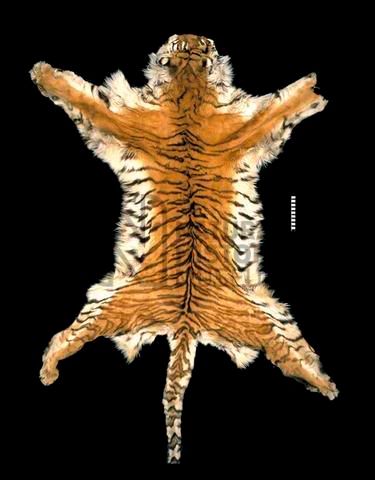 |
|
|
|
Post by another specialist on May 12, 2007 5:59:56 GMT
Are there any current news about the survey for this species or is there no more hope to rediscover this species? Are there any current news about the survey for this species or is there no more hope to rediscover this species? Not heard anything myself at the moment possibly lenny may have something to add to this? |
|
|
|
Post by another specialist on May 12, 2007 6:00:46 GMT
The Extinction of the Caspian Tiger Yesterday or tomorrow? - A lesson for Humanity. Depending on whom you believe, the last Caspian tiger was reportedly shot in Northern Iran in 1959, or captured in Northeastern Afghanistan in 1997. There have also been recent reports of tigers living in mountains, forests and steppes on the western side of the Caspian Sea, as well as in remote forested areas of Turkmenistan. The Caspian Sea is the largest lake in the world. It is an ancient remnant of the Tethys Ocean, which, during the Cretaceous era, extended from the Atlantic, through the Mediterranean region, all the way to the South China Sea. It is nestled in a large basin between the Trans-Caucasian and Elburz Mountains, which extend eastward to join the Pamirs, Hindu Kush and Himalayan ranges. The area surrounding the Caspian Sea coast has a number of uniquely rich pockets of biodiversity, in stark contrast with much of the arid Middle East. The forest here used to be alive with wild animals: wolves, wild boars, jackals, leopards, brown bears, wild sheep, gazelles, deer, cheetah…and tigers. Most of these mammals can still be found in the remaining forested areas, such as Golestan National Park on the eastern Caspian coast, and on the western Caspian shore, which still offers winter sanctuary to millions of birds, including waterfowl and shorebirds. The favored habitat of the Caspian tiger ( Panthera tigris virgata ) used to be around the coastal plains, particularly in the provinces of Mazandaran, Gilan, Golestan and Lankeran (Azerbaijan). All that remains today are small pockets of forested slopes and some marshy copses of beech, oak, hornbeam, tamarisk, pomegranates, boxwood and ash, where the dominant predator is the jackal. Due to intensive hunting and deforestation, the Caspian tiger retreated first from the lush lowlands to the forested ranges, then to the marshes around some of the larger rivers, and finally, deeper into the mountains, until it almost certainly became extinct. From time to time, rumors have circulated that Caspian tigers still exist, but these have never been scientifically verified. According to some experts at the Iranian Department of Environment, tigers may still survive in the mountains south of Aliabad, on both sides of the Turkmenistan border, and in the southeastern corner of the Caspian coast near or within the Parvar protected region. It is here that, some years ago, feline tracks were discovered which caused great excitement in IDOE. Twenty huge prints, 12cm long and 14.5cm wide, were found in both snow and on the ground. These were too large to be those of a Caspian leopard (Panthera Pardus), a large cat that still exists in this region, unless this was an extraordinarily large leopard. We must study the tiger from a scientific, historical and cultural point of view before many valuable sources of information are lost forever. Most of the surviving people who have come into direct contact with Caspian tigers are now elderly. We still have time to make a record of their knowledge and experiences. In the unlikely event that there are some remaining Caspian tigers, we might also be able to do something to preserve the animals or their genes. But we won't be able to do much more than speculate until we compile more facts. This is precisely what The Caspian Tiger Investigation proposes to achieve. An Outline of The Caspian Tiger Investigation) THE CASPIAN TIGER INVESTIGATION www.tigers.ca/Foundation%20overview/caspian2.htm |
|
|
|
Post by another specialist on May 12, 2007 6:01:08 GMT
This curious subspecies (technical name Panthera tigris virgata) was once the western-most of all wild tiger subspecies. Its home range included Afghanistan, Iran, Iraq, Turkey, and portions of Russia. These are the tigers that lent their imagery to the many tiger-laden artistic representations of the mighty Ottoman and Persian Empires. The Caspian subspecies is also considered unusual because it inhabited a terrain as unique for its arid characteristics as the Siberian tiger's northern regions are for their snow and the Sumatran tiger's home is for its densely overgrown forests. Sadly, the last formally documented observation of the Caspian tiger occurred in the 1950s, and the animal is therefore now universally presumed to be extinct. There have been recent reports of large cat sightings close to the Caspian Sea coast, where the border of Iran and Turkmenistan meet. Some believe these are tigers; others are sure they are Persian leopards. The Tiger Foundation, in collaboration with Boomiran - an Iranian nature conservation NGO - is currently conducting a on-site investigation of these reports and, at the same time, preparing an extensive report on the Caspian Tiger's likely extinction. Please see the Caspian Tiger Project page in this web site for details. www.tigers.ca/Tigerworld/caspianframe.html |
|
|
|
Post by another specialist on May 12, 2007 6:04:08 GMT
An interesting question is the strange aspect of Caspian tiger skull. It have many differences comparing with other tigers. Look the expanded sagital crest! or the "torus" above the eyes! They are unique in tigers!!   Today, we know that Sumatran tiger is i the way to became a new species, but this tiger is more similar to other subspecies than Caspian tiger. It is possible that Caspian tiger was, in fact, a distinct Panthera species? (More skulls drawings - one for tiger subspecies - in this weblog: cristianvillaseca.bitacoras.com/archivos/2005/12/25/el-tigre ) |
|
|
|
Post by another specialist on May 12, 2007 6:04:48 GMT
Between 1973 and 1976 extensive efforts were made by the biologists of the Iranians Department of Environment to determine if tigers remained in the forests of the Alborz Mountains. Casts of cat pug marks were collected throughout the region each winter. Almost all were easily identified as leopard. However in two of the more isolated areas the casts were sufficiently large as to be suggestive of tiger. A dozen bait stations with remote cameras wee established in both regions over a two winter period, but no tiger predators were recorded. Some unusually large cat tracks in partilally melted snow conditions in conjunction with leopard photographs led to the conclusion that the original casts were those of leopard. Closer examination of the original casts also revealed that they were recorded while the animal or animals were descending down snow-covered slopes, at which time the toes were widely splayed, thus adding to their size. Once the tiger's decline had become well recognized, laws were enacted both in Iran and the USSR giving it total protection. However, such actions did not come soon enough to save it in the wild. No errort was made to develop a captive breeding program, which might also have saved itfrom ectinction. iranzoo.tripod.com/tiger/tiger.html |
|
|
|
Post by another specialist on May 12, 2007 6:05:25 GMT
No animal is waking thus reverence, thus angst giving, proudly and incredibly like the probably biggest big cat of the world, the tigers. Already in the jungle book he appeared, as a king of the primeval forest, does to the hunt on human child Mowgli. But still earlier, at Roman times, the tiger was already known, the Roman legionaries in oriental fields to marched ones knew and feared the big tiger. In the today's world has withdrawn the " king of the woods ", as the tiger is also called in Siberia, long time ago and has become rare. 10 percent of the former tiger's continuance there not even is still, 100 years ago there still was 10 times more tiger than today. 3 have been exterminated by 8 different, approved subspecies of the tiger even completely, one was of it the mighty, kaspische tiger, known also as a Turantiger. His eradication was quick and crude, the big cat after which the river Tigris was named and was sung by the poet Virgil once, has been shot up to the last copy and has been skinned. Nevertheless, one is not quite sure. There were in last decades some sightings which are based, however, most probably on mistakes with leopards. A searching action was still begun by zoologists, unfortunately, unsuccessfully. Even if his spreading area was gigantic, there probably is really no more kaspian tiger. But what distinguished the kaspian tiger from other big cats? Nowadays thanks to many old pictures, drawings to hunting reports and old fur one can do to himself a very good picture of the kaspian tiger. He was to be distinguished clearly from other tigers. Typically for this tiger which could weigh between 2.9 and 3.2 ms long and, besides, up to 300 kgs, was the short, face almost similar to pug and the cervical mane which is more distinctive only with lions. Also the fur looked a little bit different, than that of the other tigers. Thus the kaspian tiger did not have especially luxuriant stripes black separate more were deep brown, his fur was long and luxuriant as it is, otherwise, only with the sibirian tiger and he had more tail rings than all the other subspecies. The native country of the kaspian tiger were the mountain woods all around kaspian sea, also in Iran, in Iraq, Kazakhstan, Russia and eastern Turkey this impressive big cat was to lives. Already in the late Middle Ages people have bumped increasingly into this tiger. Only sheep shepherds reported all too often, like her herds by big, manes to weight-bearing tigers were attacked. Many of the herdsmen from the Caucasus and East feared the kaspian tiger and also the legendary wild hunter Jim Corbett knew and feared this tiger. However, all this humility and all respect protect this tiger not against his destiny, unfortunately. Tiger's fur was and is good - how ivory - popular which is high traded on the black market. Every hunter presents arms with pleasure and a full pride are trophies and to these trophies the kaspian tigers also often belonged. Also the bones of the kaspian tiger which was known, by the way, also as a Persian tiger were hotly desired. Above all in the Asian lands they counted as a special miracle medicine and remedy. Thus there were immediately several reasons to shoot tiger. The tiger cannibals are, besides, was only one welcome justification. Thus became the kaspian tiger, although he belonged once to the most frequent tigers, soon a rarity. Because in his spreading area often wars took place, many of these nice tigers were shot in the chaos of war, even machine guns were often used to kill the tigers. To the animals no chance remained. Also the farmers complained over and over again to losses which they ascribed to this tiger. It probably does not surprise there that already in 1950 the rarest animal was the kaspian tiger in the area of the Tigris. Now the tiger's sightings and shot copies became rarer and rarer. Already in the early 1920s there was this tiger no more in Russia and in Turkey. His last refuge had this big cat, after all, in Iran where still some individuals outlasted in the higher mountain woods. There the very last firings were announced in the 1970s. In 1978 then the last plausible sighting report was done and one takes to that the kaspian tiger about 1980 finally had become extinct. |
|









